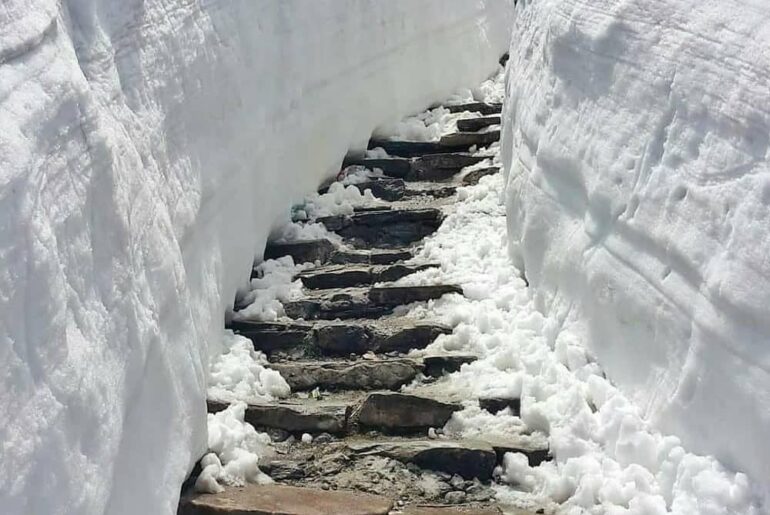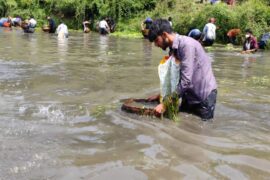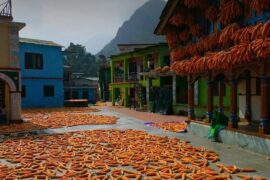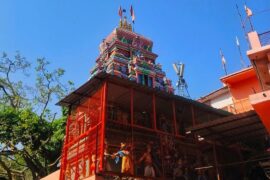Discover the Hemkund Sahib Trek 2 Days Itinerary from Govindgaht
The Hemkund Sahib Trek is a pilgrimage journey that offers a perfect blend of natural beauty, adventure, and spirituality. The trek takes you to the revered Hemkund Sahib Gurudwara, located at an altitude of 4,329 meters (14,200 feet) above sea level.
This detailed blog will guide you through the enchanting trek, providing information on the route, highlights, essential tips, and the spiritual significance of this awe-inspiring journey.
Historical and Spiritual Significance:
The Hemkund Sahib Gurudwara holds immense religious importance for Sikhs and Hindus alike. It is believed to be the place where Guru Gobind Singh, the tenth Sikh Guru, meditated in his previous life.
Additionally, it is associated with the Hindu mythological epic, the Mahabharata, where King Pandu practiced penance at this sacred spot. The Gurudwara is also known for its beautiful architecture and serene surroundings, making it a place of peace and spiritual rejuvenation.
Starting Point:
Govindghat The trek to Hemkund Sahib commences from the small town of Govindghat, located approximately 275 kilometers from Rishikesh. Govindghat serves as the base camp for the trek and can be reached via road from Rishikesh or Haridwar.
It offers accommodation options and facilities for trekkers to prepare themselves before embarking on the journey.
Trek Route and Highlights:
The trek from Govindghat to Hemkund Sahib is approximately 19 kilometers (11.8 miles) long and can be completed in two days. Here is a breakdown of the trek route and its major highlights:
Day 1: Govindghat to Ghangaria (14 km)
- The initial stretch involves a well-defined trail along the banks of the Alaknanda River, passing through picturesque landscapes, waterfalls, and charming villages.
- The trail gradually ascends, taking you through dense forests of oak and rhododendron.
- Arriving at Ghangaria, a small settlement, offers accommodation options and serves as a base for the next day’s trek.
Day 2: Ghangaria to Hemkund Sahib (5 km)
-
- The trek from Ghangaria to Hemkund Sahib is relatively steep, but the breathtaking views make it worth the effort.
- As you ascend, you’ll witness the magnificent Valley of Flowers, a UNESCO World Heritage Site known for its vibrant alpine flora.
- Upon reaching Hemkund Sahib, you’ll be welcomed by the serene glacial lake surrounded by snow-capped peaks and the grand Gurudwara.
Essential Tips for the Trek:
- Obtain the necessary permits and medical check-ups before embarking on the trek.
- Carry sturdy trekking shoes, warm clothing, rain gear, sunscreen, and a first-aid kit.
- Stay hydrated and carry water purification tablets or a water filter.
- Pace yourself and take regular breaks to acclimatize to the altitude.
- Engage with locals, fellow trekkers, and pilgrims to understand the cultural significance of the region.
Best Time to Visit:
The ideal time to undertake the Hemkund Sahib Trek is from June to September when the weather is pleasant, and the trekking routes are accessible. The monsoon season (July to August) should be approached with caution due to occasional heavy rainfall.
Conclusion:
The Hemkund Sahib Trek is a transformative experience that combines the beauty of the Himalayas, the serenity of a glacial lake, and the spirituality of a revered Gurudwara. It offers an opportunity to connect with nature, find solace in the mountains, and embrace the cultural and religious heritage of the region.
As you embark on this remarkable journey, be prepared to be mesmerized by the scenic vistas, challenged by the terrain, and uplifted by the spiritual aura of Hemkund Sahib.




Comments are closed.